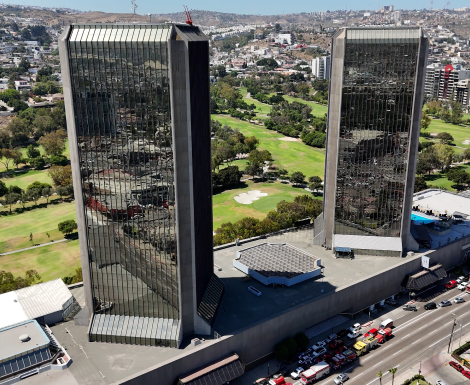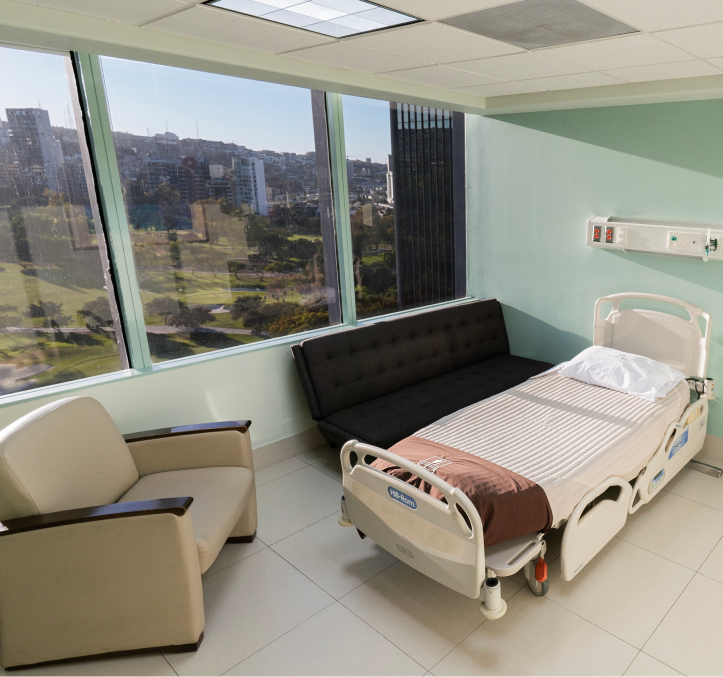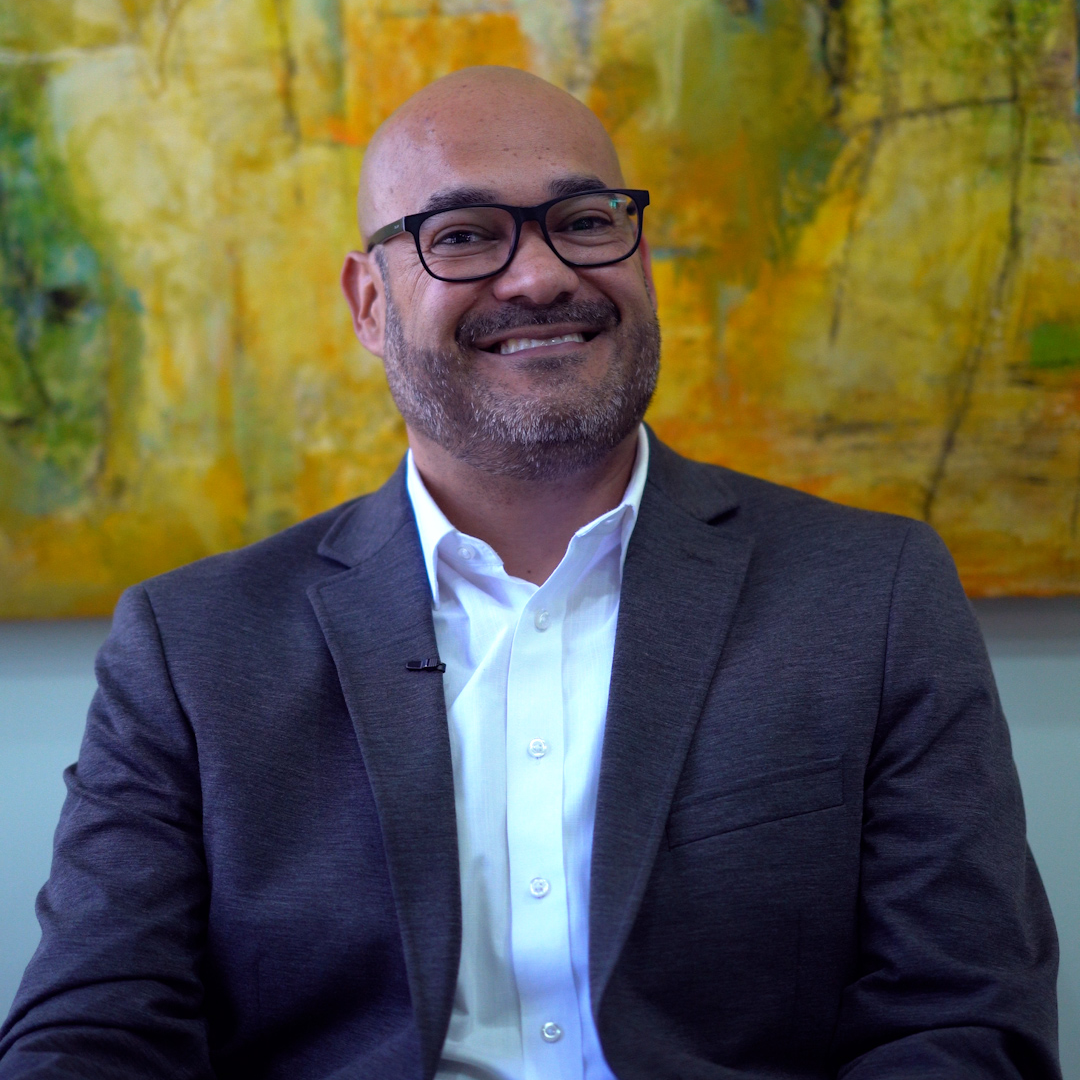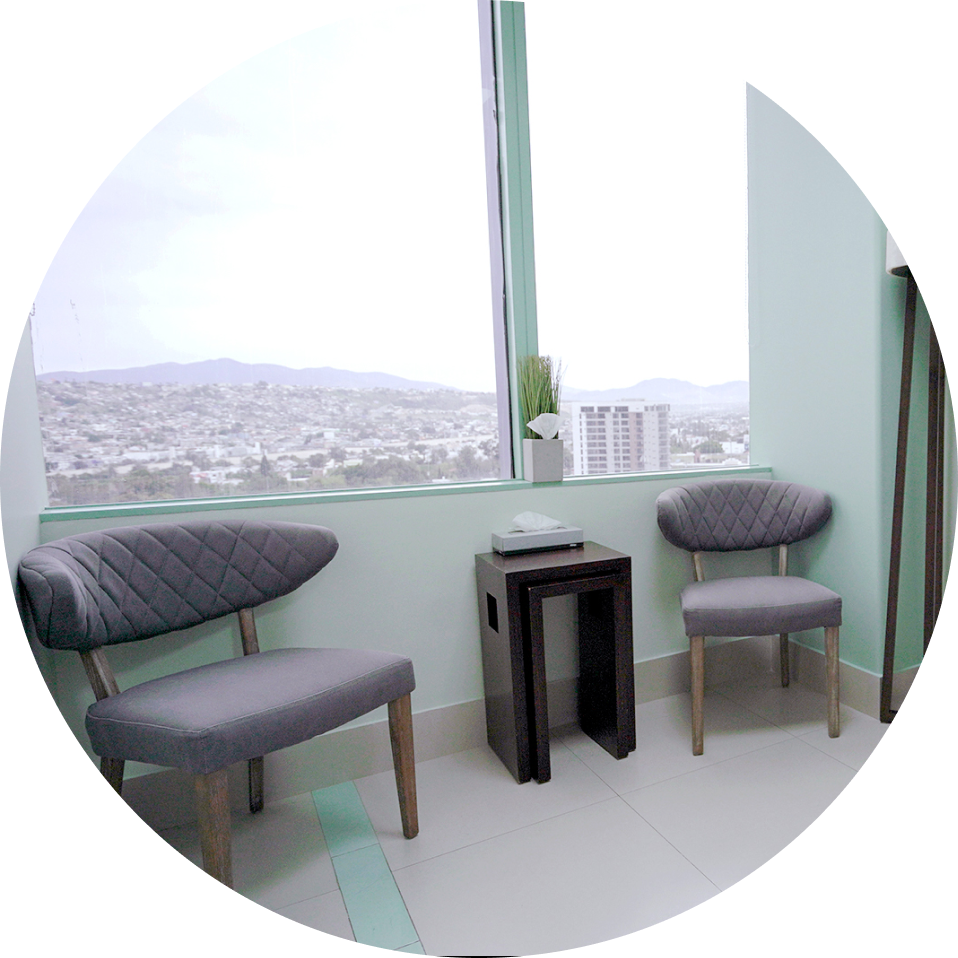




Karla
Inzunza

Emilio
Codorniz

Shantal
Maldonado

Anahí
Ortega

Sandra
Hernández


- Certified Master Surgeon: First woman in the world certified as a Master Surgeon in Bariatric Surgery.
- Over 15 years of Experience Over 15 years of experience transforming lives through advanced surgical techniques.
- Internationally Recognized Recognized globally for her contributions to bariatric medicine.
How is a Gastric Sleeve Surgery done?
There are a variety of bariatric procedures that are designed to help patients address their specific health concerns and lose weight. The LIMARP® International Center of Excellence for Obesity in Tijuana, Mexico successfully performs multiple types of bariatric surgery in the context of our integrative bariatric program. The type of procedure selected for you will depend on your specific case, individual needs, and weight loss goals. Dr. Liza María Pompa González has performed thousands of bariatric surgeries and she and her surgical team are highly experienced in each type of procedure.
Once our team determines that you are a candidate for bariatric surgery, we can determine the most effective type of surgery for you.
This bariatric procedure is called gastric sleeve surgery because, during the intervention, the stomach is given the shape of a small tube or sleeve. To achieve this, the surgeon inserts a laparoscopic camera through the belly to monitor the operation. Then the surgeon inserts a lean and long stapler through other incisions in the abdomen to staple the stomach vertically.
This process divides the stomach into two parts: the bigger part, roughly 80%, which will be completely removed from the body, and the smaller part which will remain, in a much smaller shape, resembling a sleeve. This type of intervention is considered a restrictive procedure because what it achieves is that it restricts the size of the stomach, preventing it from obtaining big portions of food.
This procedure does not interfere with the absorption of nutrients, though, because it does not involve any alteration to the digestive process, as it leaves the intestines intact.
The gastric sleeve procedure, also known as a gastrectomy, is a restrictive bariatric surgery that significantly reduces the size of your stomach and your appetite to encourage weight loss. It is an uncomplicated procedure with a shorter recovery time than others. A gastrectomy physically restricts the amount of food you can eat by reducing the size of your stomach. It is a restrictive surgery that also limits the production of ghrelin, which contributes to a reduction in appetite.
This allows patients to feel satisfied with less food and helps them with portion control if it was recommended to them by a licensed dietitian.
According to the latest global registry of the International Federation for the Surgery for Obesity and Metabolic Disorders (IFSO), gastric sleeve surgery is by far the most requested and practiced bariatric surgery worldwide. Out of all the bariatric surgeries that are practiced around the world, roughly 59% account for a gastrectomy, and almost all of them are done with laparoscopic techniques. This is the bariatric procedure for which experts have the most data and the most register of outcomes and results in long term follow-ups. It is also the most standardized procedure in the bariatric community. It’s been largely documented that complications due to gastric sleeve surgery are very low, and that it provides good control and great benefits over comorbidities associated with obesity.
What is the recovery time for this surgery?
The recovery from this surgery is faster than other bariatric procedures. Patients may expect a post-operative stay of 1 to 2 days in the hospital’s recovery room, and mandatory rest for four to six weeks. During the first weeks of recovery, the patient should follow a strict only-liquids diet, which will progressively move to purees and solids.
Gastric sleeve surgery is carried out as follows. The surgeon inserts a laparoscopic camera through the belly to monitor the operation, then they insert a lean and long stapler through other incisions in the abdomen to staple the stomach vertically. This process divides the stomach into two parts: the bigger part, roughly 80%, which will be completely removed from the body, and the smaller part which will remain, in a much smaller shape, resembling a sleeve. A gastrectomy is considered a restrictive procedure because what it achieves is that it restricts the size of the stomach, preventing it from obtaining big portions of food. This procedure does not interfere with the absorption of nutrients, though, because it does not involve any alteration to the digestive process, as it leaves the intestines intact.
The latest IFCO report states that the average body weight loss, one year after gastric sleeve surgery, is 31%.
Patients that suffer comorbidities associated with obesity can also expect a significant improvement in their symptoms. In some cases, patients can achieve the resolution of their illnesses. According to a systematic review and meta-analysis of gastric sleeve outcomes, 100% of patients reach a resolution for their hyperlipidemia, 50% do for hypertension, and 66% for type 2 diabetes at five years after the surgery.
The recovery from a gastrectomy is faster than other bariatric procedures. Patients may expect a post-operative stay of 1 to 2 days in the hospital’s recovery room, as well as a mandatory rest for four to six weeks. During the first weeks of recovery, the patient should follow a strict only-liquids diet, which will progressively move to purees and solids.
The amount of weight loss patients can expect after a gastric sleeve procedure depends on many factors, such as the patient’s body mass index (BMI) before surgery, their commitment to maintain healthy habits, and the time that has passed after the gastrectomy. But one can expect to notice major changes in weight loss as soon as 6 months and as long as 3 years. The patient can then maintain his or her weight with diet, exercise, and a healthy lifestyle.
Bariatric medicine studies report very different weight loss results; however, evidence shows that the range oscillates between 50 and 70% of excess weight loss, which represents the difference between your ideal weight and your initial weight before surgery.
What is the weight loss expected after a gastric sleeve surgery?
The amount of weight loss to expect after a gastric sleeve procedure depends on many factors, such as the patient’s body mass index (BMI) before surgery, his commitment to maintaining healthy habits, and the time that has passed after the surgery. But one can expect to notice major changes in weight loss as soon as 6 months and as long as 3 years. The patient can then maintain his or her weight with diet, exercise, and a healthy lifestyle.
What is Gastric Sleeve Surgery?
The gastric sleeve procedure is a restrictive bariatric surgery that significantly reduces the size of your stomach and your appetite to encourage weight loss. It is an uncomplicated procedure with a shorter recovery time than others.
This procedure physically restricts the amount of food you can eat by reducing the size of your stomach. It is a restrictive surgery that also limits the production of ghrelin, which contributes to a reduction in appetite. This satisfies patients with less food, thus encouraging portion control.
Why Mexico for Gastric Sleeve?
In light of all these facts, sleeve gastrectomy is considered one of the safest and most effective obesity treatments available in Mexico. Gastric Sleeve Surgery in Tijuana Mexico, is one of the most popular procedures available in the City.
Tijuana Mexico is renowned for its excellent medical tourism, being so close to the border, and the city has many accessible places for tourists.
Having a safe journey to Tijuana Mexico for surgery is a prime point when choosing to have a procedure.
Mexico has become one of the most visited countries when it comes to medical tourism. The reasons why people seek this external service vary, but one of the main ones is that the treatment they need is not available in their location and if it is, the cost is not accessible.
At first, medical tourism was known as “those who traveled from less-developed countries to major medical centers in highly developed countries for treatment unavailable at home”[3]. The most popular available specialties in Mexico are plastic aesthetic surgery, lap band and bariatric surgery, oral care and eye care.
We understand that the idea of traveling to Mexico may pose some challenges due to the transportation or uneasiness of being in a foreign country, but there are many hospitals and clinics, ours included, that provide a comfortable and safe space if you’re visiting us from abroad. Aside from the difference in pricing, other benefits of having bariatric surgery in Mexico are that many cities in the country offer a relaxing environment and some patients even travel to Mexico early to enjoy vacation prior to surgery.
It can also provide privacy and discretion. If you’re uncomfortable with people knowing you are having weight loss surgery, you might choose to tell them that you are going on vacation to Mexico instead. Other benefits include high quality preoperative and postoperative care; all-inclusive pricing for the entire bariatric procedure with financing available; short wait-times; better outcome from high quality services by certified bariatric surgeons with years of experience in the field; extremely low complication rates, and high quality services at a fraction of what it costs in the US and Canada.
Do I need a specific Body Mass Index (BMI) to qualify?
A sleeve gastrectomy is a surgical procedure meant for patients with a body mass index (BMI) over 40. Patients with a BMI between 35 and 40 can also be candidates for this procedure if they suffer serious weight-related health conditions, such as type 2 diabetes, sleep apnea, hypertension, high cholesterol, heart disease, or fatty liver disease. Patients who have been repeatedly unsuccessful in losing weight, in the last three years, through more conservative methods such as diet or exercise are also eligible for this surgery.
This procedure may also be recommended to patients with a BMI over 60 as the first part of a two-part procedure, which would be followed by a duodenal switch.
Bariatric surgery is usually reserved for patients who have had previous unsuccessful weight loss attempts through medically supervised diets and exercise.
How to pay for my Gastric Sleeve Surgery in Tijuana Mexico?
At LIMARP we take pride in the quality and excellence of our service, while also providing inclusively tailored packages for our patients. We know that when considering a life-changing surgery, cost is one of the most important factors. While we offer custom packages for our services, we offer a variety of plans to help you find the right price for your budget. We know that health is important, but you shouldn’t have to feel that your budget prevents you in any way.
If you are interested in getting to know more about our services and our all-inclusive packages, or if you’re interested in knowing which bariatric surgery, sleeve gastric surgery cost is the right choice for you, please call our LIMARP clinic in Tijuana Mexico at (619) 270-8823 or contact us online. We will be glad to help.
In the meantime, let us guide you through the process our patients experience when they are eligible for gastric sleeve surgery at the LIMARP clinic in Tijuana Mexico, with Dr. Liza María Pompa González.
As part of LIMARP International Center of Excellence for Obesity’s wider scope of services, Dr. Liza Maria Pompa González offers gastric sleeve surgery in Tijuana Mexico. This procedure physically restricts the amount of food you can eat by reducing the size of the stomach. This allows patients to feel full with less food and thus encourages portion control.
When analyzing costs and options, please keep in mind that quality and safety have a price, and even though LIMARP® is a competitive clinic, we spare no expense when it comes to the safety of our patients. Medical tourists that travel to Mexico may expect to save 50 to 80% of the price they would have paid for the same medical services in their home country, especially when it comes to surgeries like the gastrectomy. The same applies for medication and counseling. Let us assure you that the low price of medical services in Mexico does not translate to poor service nor poor results. You will be getting the same, if not superior results and, most of all, you will be receiving the best customer/patient experience there is. Surgeons, medical professionals, and nurses provide their services with human touch, empathy and the legitimate concern to fulfill your every need.
The overall cost of sleeve gastrectomy surgery in Mexico depends on which part of the country the bariatric procedure is performed. Sometimes, gastric sleeve surgery costs are quite high mainly because of the specialized tools and medical supplies needed to successfully perform the weight loss procedure. Then, there are other administrative and extra costs that really add up to a significant amount.
In comparison to the United States, Mexico has the most affordable cost of sleeve surgery. While in the US most patients report spending up to $20,000 USD per sleeve surgery, you can expect to pay from $3,995 to $7,000 USD for the entire high-quality weight loss procedure in Mexico. In Canada, vertical sleeve gastrectomy surgery is covered by the national healthcare system, but you should keep in mind that waiting lists are usually quite long since this is not an emergency procedure.
The good news is that there are specialized facilities with excellent healthcare which provide high quality gastric sleeve surgery procedures at a very affordable cost in Mexico. It is no surprise why medical tourism for affordable sleeve gastrectomy surgery has grown exponentially in Mexico in recent times. For example, the full cost of sleeve surgery is sometimes lower than 50-70% of what you would pay in the US or Canada.
You may be wondering why bariatric surgery is cheaper in Mexico and that is because the healthcare system in the country is different than in the United States, as well as the money flow. The cost of bariatric surgery in Mexico is 3 to 4 times less than the cost of surgery in the United States and this is due to the following points[2]:
Surgeons and hospitals in Mexico have less overhead. This does not mean a reduction in quality care, it means money flow operates differently in Mexico.
Medical supplies, salaries, and administrative costs are less, meaning you pay less for your surgery.
Malpractice insurance cost is significantly lower for surgeons in Mexico. Unlike in the United States, malpractice lawsuits are relatively uncommon. At best, lawsuits in Mexico conclude with patients receiving follow-up care at no charge, contrasting the large cash settlements we see stateside.
In the United States, complex relationships between healthcare groups, patients, insurance companies, billing procedures, brokers, and hospitals ultimately increase patient cost. In Mexico, there is freedom to practice medicine with less regulation.
The focus of the surgeon and hospital is shifted from tracking and collecting money to patient care. You will receive a straightforward, all-inclusive bill.
The lower cost for gastric sleeve surgery in Mexico does not equate to less professional healthcare services. On the contrary, most facilities providing this highly effective bariatric procedure are staffed with the best bariatric surgeons in Mexico, such as our team of doctors at LIMARP®. The facilities also provide their clients with payment options including credit cards and financing. The best sleeve gastrectomy surgery facilities in Mexico are straightforward in their charges. They will not surprise you with hidden costs although you can expect to be charged a bit higher if you have a larger than usual BMI and or other conditions.
Our treatments at LIMARP® may be covered by your American or Canadian medical insurance, although this mostly depends on your insurance’s policy. Many medical insurances cover the cost of bariatric surgery interventions since they have been recognized as safe and effective treatments for obesity that improve the general health condition and life quality of obese patients. One of the many surgeries covered by most medical insurances is the gastrectomy, but if for some reason you’re unable to use it, we also provide other options so that the surgery is affordable to you.
Is Gastric Sleeve Surgery in Tijuana Mexico safe?
Gastric sleeve Surgery in Tijuana Mexico, or any location in the world, is a safe procedure, as long as the medical facility you are planning on having the surgery on has been researched extensively before doing any treatment. Knowing if the clinic and its staff are certified for these procedures and have the latest technologically advanced equipment, is crucial to making your decision.
Safety is a top priority for medical tourism, as all certified facilities have high quality and safety standards, with many having the same care and state-of-the-art technology to go through the same procedures you’d get from having them back at home. Tijuana Mexico comes up as an affordable and efficient way to get these types of procedures done.
The fact that Tijuana is one of Mexico’s most crossed borders, the convenience of being closer to the United States, saves considerably if you’re on a budget. But you don’t want to sacrifice safety, this is what it boils down to. A certified bariatric surgeon and team, clean and up-to-date facilities. Adding the extra amenities and luxuries being in the city has to offer. Imagine, you get to visit and sightsee during your stay in Tijuana.
Gastric Sleeve Surgery in Tijuana Mexico is one of the surest locations to minimize the risks of gastric sleeve surgery is to trust your care to an experienced medical team. Rest assured that in the hands of experts like Dr. Liza María Pompa at LIMARP, major complications for this type of surgical intervention are very rare.
How does LIMARP’s All-Inclusive Gastric Sleeve Surgery Program work?
Most clinics in Mexico offer all-inclusive packages for their patients when they cross the border for their gastric sleeve surgery. These packages may include ground transportation, hotel stays, lab tests, and/or follow-up consultations. At LIMARP®, we offer an integrative treatment program as part of our all-inclusive package, which also consists of access to a luxurious and private recovery room. Our clinic is located right next to the beautiful golf course of the Tijuana Country Club. Our private recovery rooms have breathtaking panoramic views to the golf course and to the business district of Tijuana.
Furthermore, our all-inclusive packages specially designed for patients traveling from abroad include a two-night stay at the prestigious Grand Hotel Tijuana and transportation to and for the airport and hotel. With our all-inclusive package, you can just relax and focus on what is really important: your journey to a healthier future.
Our state-of-the-art facilities in Tijuana are certified as an International Center of Excellence for Obesity and meet international safety standards. All of our certifications and the global recognition our team of doctors have obtained throughout the years are reflected on the success stories of the patients who have come through our doors. The media has also recognized Dr. Liza María Pompa González as one of the top bariatric surgeons in the country.
What are the risks of gastric sleeve surgery in Mexico?

While gastric sleeve surgery has been proven to be safe, when carried out accordingly, in Mexico, there are still several downsides or risks of traveling to another country to have any type of procedure done.
Two of the main ones are the pre-surgical care and the cost of any arising complications. If you’re traveling far from your hometown or have little to zero access to your surgeon prior to the surgery, you may feel uneasy when the day of your surgery comes.
On the other hand, while complications are rare, they might arise due to one thing or another; if you have complications as a result of surgery, it is not likely that your health insurance will cover the care you need if you had your surgery in Mexico. You also may not be able to sue for malpractice.
Another risk may be communication, especially if you’re not fluent in Spanish. Most clinics count with a bilingual medical staff, but the language barrier can open up space for misinterpretations which can hinder your experience in Mexico. It’s also important to point out that there is a lot of misinformation regarding Mexico online and that it’s up to the patient to also do their research when it comes to choosing a bariatric clinic for their gastric sleeve surgery.
At LIMARP®, we not only pride ourselves in providing top-quality care and facilities, but we’re also transparent with our patients when it comes to pricing and information on all the services we offer at our Tijuana clinic. We’re always available to answer all of your patient’s questions through different platforms, such as our website, WhatsApp, or by phone.
Contact
Consultation
Your Trip
Pre-surgery
Surgery
Recovery
Follow Up












